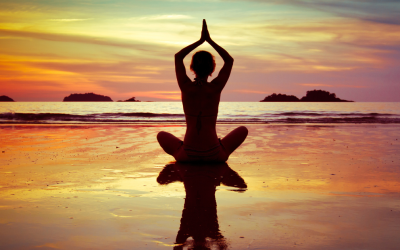Stress can significantly impact our lives, affecting our physical and mental well-being. From work pressures to personal challenges, finding healthy ways to manage and reduce stress is essential. In this article, we will explore several stress relief tips that you can try today. By incorporating these practices into your daily routine, you can begin to prioritize self-care and create a more peaceful and balanced life.
Prioritize Self-Care: Simple Practices to Start
Self-care is crucial for managing stress. Getting caught up in our busy schedules and neglecting our needs is easy. However, taking time for yourself is not selfish; it’s necessary for maintaining overall well-being. Start by setting aside a few minutes daily for activities that bring you joy and relaxation.
This could be anything from reading a book to a soothing bubble bath. The key is to find activities that help you unwind and recharge.
Eating Healthy and Incorporating Mindfulness
Did you know that self-care can also include nourishing your body with healthy and nutritious meals? Eating well-balanced meals can positively impact your mood and energy levels. Consider incorporating more fruits, vegetables, and whole grains into your diet.
These foods are good for your physical health and boost your mental well-being. So, next time you plan your meals, think about making them delicious and nourishing for your body and mind.
Additionally, incorporating mindfulness into your self-care routine can be incredibly beneficial. Mindfulness is being fully present at the moment, without judgment.
You can cultivate inner peace and reduce stress by bringing awareness to your thoughts and feelings. Simple mindfulness exercises, such as deep breathing and body scans, can be done anywhere, anytime, and provide instant calm.
The Benefits of Exercise for Stress Relief
One of the most effective ways to reduce stress is through physical activity. Exercise not only releases endorphins, the body’s natural mood-boosting chemicals, but it also helps to reduce the production of stress hormones like cortisol. Whether it’s a brisk walk, a yoga class, or a dance workout, finding an activity you enjoy can significantly impact your stress levels. Aim for at least 30 minutes of exercise daily, and you’ll notice a difference in your physical and mental well-being.
Exercise doesn’t have to be limited to traditional workouts. You can also incorporate movement into your daily routine by taking the stairs instead of the elevator, walking during your lunch break, or dancing while doing household chores.
The key is finding activities you enjoy and that get your body moving. This will help you reduce stress and improve your overall fitness and energy levels.
Create a Relaxing Environment at Home
Your home should be a sanctuary, a place where you can unwind and escape from the stresses of daily life. Creating a relaxing environment is essential for reducing stress. Start by decluttering your space, as physical clutter can lead to mental clutter. Organize your belongings and create designated work, relaxation, and sleep areas. Consider incorporating soothing elements like plants, soft lighting, and calming scents like lavender. Designing a space that promotes relaxation will help you unwind and recharge after a long day.
In addition to creating a relaxing physical environment, it’s also essential to establish boundaries in your home. Set aside specific times and spaces for work and relaxation, and try to stick to them. This will help you maintain a healthy work-life balance and prevent stress from seeping into every aspect of your life.
Remember, your home should be a place to relax and rejuvenate, so create an environment supporting your well-being. Creating a relaxing home environment is at the top of most lists of Stress Relief Tips.
Deep Breathing Techniques: How to Calm Your Mind
When stress levels rise, focusing on breathing can work wonders in calming your mind and body. Deep breathing exercises are simple yet powerful tools that can be practiced anywhere, giving you instant relief during stressful situations.
Belly Breathing
One such technique is belly breathing. Find a comfortable sitting or lying position, and place one hand on your chest and the other on your abdomen. Take a slow, deep breath through your nose, feeling your abdomen rise as you fill your lungs with air. Exhale slowly through your mouth, feeling your abdomen fall. Repeat this process several times, focusing on the sensation of your breath.
Counted Breathing
Another technique is counted breathing. Inhale deeply for a count of four, hold your breath for a count of four, then exhale slowly for a count of four. Repeat this cycle several times, allowing your breath to guide you back to calmness and relaxation.
By incorporating deep breathing techniques into your daily routine, you can train your body to respond to stress healthier and more relaxedly. Practice these techniques whenever you feel overwhelmed and watch the stress melt away.
It’s important to note that deep breathing helps reduce stress and anxiety and has numerous physical benefits. Taking deep breaths allows more oxygen to enter your body, improving your overall lung capacity and respiratory function. This can lead to better endurance during physical activities and even help lower your heart rate and blood pressure.
In addition to its physical benefits, deep breathing can positively impact mental well-being. Focusing on your breath and being present at the moment can help clear your mind of racing thoughts and promote a sense of mindfulness.
This mindfulness practice can enhance your concentration, memory, and cognitive abilities, ultimately improving mental clarity and focus in your daily tasks.
The Power of Mindfulness and Meditation
Mindfulness and meditation have gained popularity in recent years, and for good reason. These practices offer numerous benefits for reducing stress and promoting overall well-being. Mindfulness involves paying attention to the present moment with openness and curiosity.
By becoming more aware of your thoughts, feelings, and physical sensations, you can learn to respond to stress more constructively.
One way to incorporate mindfulness into your daily routine is through meditation. Find a quiet space to sit comfortably and uninterrupted for a few minutes. Close your eyes, focus on your breath, and ignore distracting thoughts. If thoughts arise, observe them without judgment and gently bring your attention back to your breath.
Start with a few minutes of meditation each day and gradually increase the duration as you become more comfortable.
Research has shown that regular mindfulness and meditation practices can lead to physical changes in the brain, including increased gray matter density in areas associated with memory, learning, and emotional regulation. These structural changes can improve cognitive function and emotional well-being over time. Additionally, mindfulness has been linked to reduced symptoms of anxiety, depression, and chronic pain.
Another way to cultivate mindfulness is through daily activities such as mindful eating, walking, or washing dishes. By bringing your full attention to the present moment during these activities, you can enhance your overall sense of well-being and connection to the world.
Mindfulness is not about achieving a particular state of mind but rather about being fully present in each moment, no matter how mundane or routine the task may seem.
Use these Stress Relief Tips to Lower and improve Your Life
Incorporating these five stress relief tips into your daily routine can profoundly impact your overall well-being. You can create a more peaceful and balanced life by prioritizing self-care, engaging in physical activity, practicing deep breathing techniques, and embracing mindfulness and meditation.
Remember, managing stress is not a one-size-fits-all approach. Experiment with different techniques and find what works best for you. Take the time to prioritize your well-being, and you’ll reap the rewards of a calmer, happier life.


